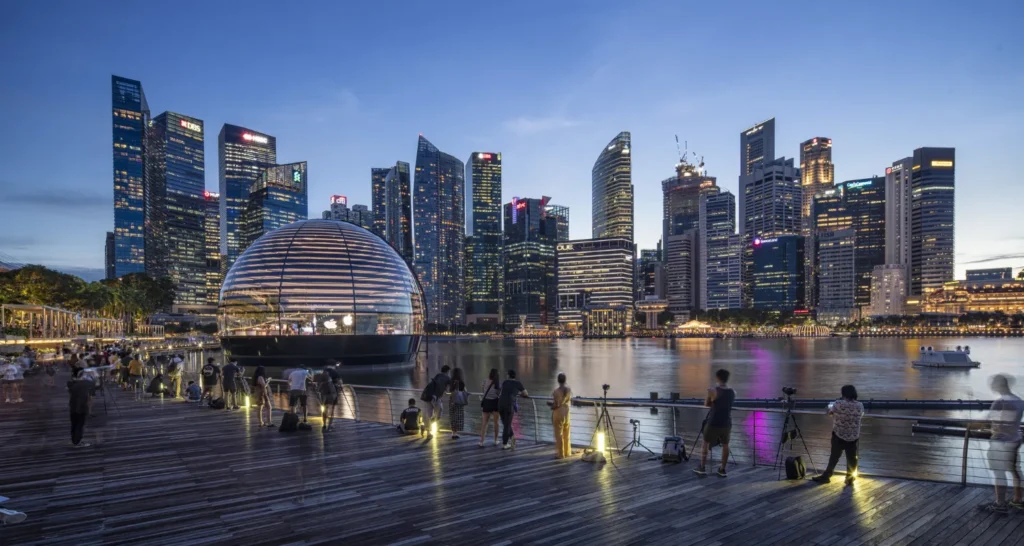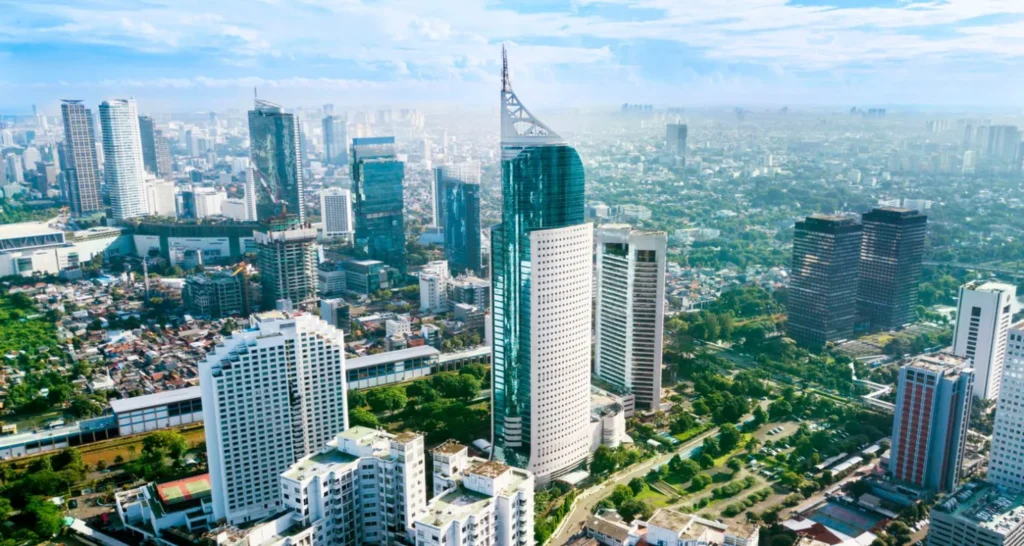SAP Smart City is a suite of digital solutions and services designed to help cities improve their infrastructure, services, and quality of life for citizens. By leveraging the power of IoT, big data, and analytics, SAP Smart City offers innovative tools for smart transportation, public safety, energy management, and citizen engagement. SAP’s expertise in these areas enables cities to become more efficient, sustainable, and resilient, delivering better experiences for citizens and visitors alike.
SAP Smart City Solution Vision
While there is no one-size-fits-all solution for the transformation of cities, there is a set of common challenges that they all must overcome. Principally, government and the companies that serve the city’s citizens must undergo their own changes to keep up with rising expectations for service, convenience, and data protection.
All cities around the globe are looking at technology innovation as the key lever to combine economic growth and quality of life, with digital technologies being the most cost-effective means to bring together livability and prosperity.
Megatransformations fueled by digital technologies are requiring cities and their ecosystem partners to reimagine business models for:
Sustainable energy: Cities must transition to a carbon-free world and deliver innovative business models that create new opportunities.
Integrated mobility: An individual’s need for safe, sustainable, and convenient mobility requires an integrated approach across modes of transportation.
Health: A growing and aging population needs affordable and accessible healthcare to ensure more years with a high quality of life.
Education and work: Innovative city and business leaders need the right workforce to turn digital innovation into better outcomes for the whole city ecosystem. Robotics and machine learning are making an increasing number of jobs obsolete, requiring cities to rethink the future of work.
Circular economy: Resource consumption continues to rise due to population growth. Governments, NGOs, companies, and citizens need to work together to find intelligent solutions for sustainability.
Trust, safety, and security: Natural and manmade disasters threaten the livability and prosperity of cities. Cyberattacks and misinformation are eroding trust, safety, and security.
Global supply chains: Future cities need solutions to reduce the costs of freight transport, which are increasing due to the growth of online sales.
People are experiencing innovative, personalized, and speedy digital business models such as Amazon and Uber and expect the same experience no matter with whom they work. At the same time, the need for sustainable solutions is exacerbated by the pressure of more and more citizens moving to cities.
Success requires building an internal culture of collaboration across organizational boundaries. It requires shifting the paradigm to a customer-first mindset and enhancing the digital experience with personalized interactions and insights. It also calls for using insights from data to reimagine end-to-end business processes and services to lift both livability and prosperity.

PAVING THE WAY FOR BETTER LIVABILITY AND PROSPERITY
Leading up to 2025, cities will proactively take steps to transform the five key domains of city life by embracing new thinking and using intelligent technologies with a focus on improving livability for all
City governance will be responsive, efficient, and accountable to citizens. Data-driven innovation will empower transparent and cost-effective resource allocation.
Mobility will be connected, autonomous, shared, and electric. Moving people and goods around the city will be seamless, safe, easy, clean, inclusive, and sustainable.
Citizen-centric cities will optimize civic participation, public innovation, and social inclusion. People and nonprofit organizations will be more engaged with governments and the communities in which they live. These future cities will fuse X-data with O-data to listen, understand, and take action to create a better citizen experience.
The urban environment will be resilient, clean, and enjoyable. Citizens will be prosumers who become active contributors to energy sustainability. Businesses and communities will nurture a circular economy that makes cities greener.
The city economy will be innovative and participatory. Businesses will collaborate with academia, government, and local communities to drive new strategies for prosperity.
FOUR PRIORITIES FOR SUCCESS
SAP identified four strategic priorities necessary for the future city’s ecosystem to harness the power of digital transformation:
Sap Smart City DIGITAL MANAGEMENT
Establishing a Customer for LifeFour Priorities for Success8By 2025, city officials will automate and orchestrate service delivery across the city ecosystem using digital technologies such as artificial intelligence.
Transparent, real-time access to data will allow cities to excel at allocating scarce resources to the most impactful programs and improve city management. It starts with optimizing existing processes by applying intelligence at the business-process level to predict outcomes and maximize operational efficiency.
SAP Smart City governments should focus on improving business processes through end-to-end integration to better manage outcomes across bureaucratic silos. With this level of automation in place, organizations can apply predictive insights at the business-process level to create new services that better meet constituent expectations. They can also use machine learning to initiate nondisruptive preventive measures to enable closed-loop maintenance and service processes.
Cities can then leverage automation and real-time data management to explore new business models including outcome-based contracting, mobility as a service, and intelligent revenue collections. To better understand why things happen and the thoughts and emotions of the people involved, cities can offer citizens and employees the chance to give experiential feedback to further refine processes, policies, and programs. Combining insights from X-data with O-data will help ensure government employees can spend more time doing what they do best.
DATA-DRIVENCITY
We predict that by 2025, groups working in the city ecosystem will be able to share data between organizational silos that currently bottle up information. They will be able to use this more holistic data combined with predictive and simulation technologies to improve strategic planning for urban sustainability, economic growth, and a myriad of other use cases.
Success in 2025 will be dependent on creating innovative processes based on a 360-degree view of experience and operational data. To meet this vision, organizations need to seamlessly collect data from multiple data sources (data at the edge, social media, O-data, X-data) to extract real-time insights that can be turned into action. They need to understand what data you need to have and what data you need to get to reach the goals and mission.
As a prerequisite, data privacy and security need to be at the forefront. Citizens own the data, and the administration owns the process. The data needs to be correct and fit for reuse based on the rules of data sovereignty. The data must not only be protected but be used in the interest of the owner.
With this in place, you should establish a single source of truth that enables data exchange with city ecosystem partners to improve decisions while also protecting privacy. Enhance collaboration with your partners by making quality data available and developing a governance model for sharing information with them.

OPERATIONAL EXCELLENCE AND INNOVATION
By 2025, organizations across the city ecosystem will redefine core processes and service delivery models (see Figure 6). They will focus on transforming legacy systems and lay the foundation for digitalized management and operations.
As a big first step, automate customer-facing services (for example, billing, ticketing, permitting, and licensing). This will enable you to respond faster, reduce costs, free up employee time to handle exceptions, and enable constituents 24×7 access to consumer-grade experiences.
Next, apply predictive insights at the business-process level to create new services that better meet constituent expectations. Use innovative technologies such as machine learning to personalize processes based on a 360-degree view of data.
Organizations can then focus on transforming end-to-end business processes, further incorporating new intelligent technologies such as artificial intelligence and advanced analytics to reach new levels of agility and effectiveness. They can also leverage blockchain to secure transactional processes between the network of non-government and government ecosystem providers. Digitalize and integrate core processes Digitalize and personalize constituent engagementSecure private data connect the dots between X-data and O-dataAutomate and augment processes Connect things with people and process intelligent organizations digitalize workforce collaboration.
Sap Smart City
CITIZEN EXPERIENCE
By 2025, we expect city governments and companies who serve citizens to improve the customer experience for their citizens by simplifying complicated processes and providing more personalized, self-managed services on all channels. Intelligent technologies with conversational user interfaces will be employed for better delivery of services. Future cities will become service orchestrators and information brokers and will deliver end-to-end customer journeys to improve the overall experience for the citizen and help bring together livability and prosperity. To achieve the 2025 vision, future cities must become obsessively customer-focused.
Today’s mobile-first, digitally connected consumers expect to be able to access digital services whenever and wherever they want. They expect this same level of customer service from their government. Future cities must combine experience data from customers with operational data to continually improve responsiveness and quality of service.
They must adopt machine learning, conversational user interfaces, and natural language processing to simplify their processes and start providing personalized service. Future cities must embrace an “only tell it once” approach, allowing customers to own their own data and eliminating the need to provide the same data again and again. Future cities’ customers will have full transparency and control over how their personal data is used in providing personalized and predictive services without compromising privacy.
This will build trust in the government. This trust, combined with automation and personalization of core services, will free govern-meant employees from mundane tasks and allow them to focus on the more complex service needs of citizens –thus improving livability. Understanding their needs Designing the customer experience empowering personnel Enabling accountability and transparent supporting a customer-focused culture.

KEY TECHNOLOGIES Sap Smart City solutions
Artificial Intelligence and Machine Learning
Companies and governments alike can use machine learning to eliminate repetitive manual tasks for inspections, licenses, fees, and applications by automatically determining classifications, routing, and responses. Machine learning can also identify fraud, waste, and abuse using historical and real-time data to uncover previously unseen correlations. Organizations can apply machine learning to historical data to streamline the quotation process for configurable services.
The Internet of Things
Connectivity, coupled with machine learning, can analyze data to manage and evaluate infrastructure, assets, traffic, and the environment. Remote condition monitoring provides real-time data from public and private infrastructure to predict maintenance needs. Data from sensors can help utility companies to monitor assets or transportation organizations to maintain trains, tracks, and buses.
Advanced Analytics
Embedded analytics can provide real-time visibility into changing environments, simulate the impact to solve policy issues, and maximize the benefit of scarce funds for everything from emergency response, transportation, crime prevention, and water and waste management to cybersecurity, emergency response, and public infrastructure.
Blockchain
Blockchain is based on distributed ledger technology, which securely records information across a peer-to-peer network. It creates a chain of unalterable transactional data that can secure almost anything of value, including land titles, constituent payments, voting records, business licenses, and customs manifests. In addition, blockchain can detect data tampering for specific transactions. An attacker will not be able to piece together the transaction, because it is dispersed among multiple ledgers and is encrypted. The blockchain model of trust, through distributed digital consensus, could reshape supply chains and commerce, including digitalizing the trade of energy and automating cross-company collaboration in microgrids.
Virtual and Augmented Reality
Already in use to help workers with utilities and transportation activities and to train emergency management personnel, virtual and augmented reality will help future cities to improve transportation planning and utility services.
Conversational AI
Voice interfaces will be the go-to technology for the next generation of applications. Virtual agents could help constituents and customers with inquiries about water or utility consumption, taxes, licenses, and public transportation needs, as well as public safety and infrastructure issues.
Data Platform to Manage Experiences
Experience management platforms enable enterprises to understand what citizens feel, think, and do every time they interact with a government organization or company that serves citizens. This technology allows organizations to combine performance O-data from their systems with X-data from citizens and employees to get an accurate picture of each customer’s experience.~50% Of new mobile apps use voice as a primary interface, and 50%of the consumer-facing G2000 will use biometric sensors to personalize experiences by 2020.3 50%Ofservers will encrypt data at rest and in motion by 2022. Over 50%of security alerts will be handled by AI-powered automation, and 150 million people will have blockchain-based digital identities.4 $1.1 trillion internet-of-Things (IoT) spending in 2023.













